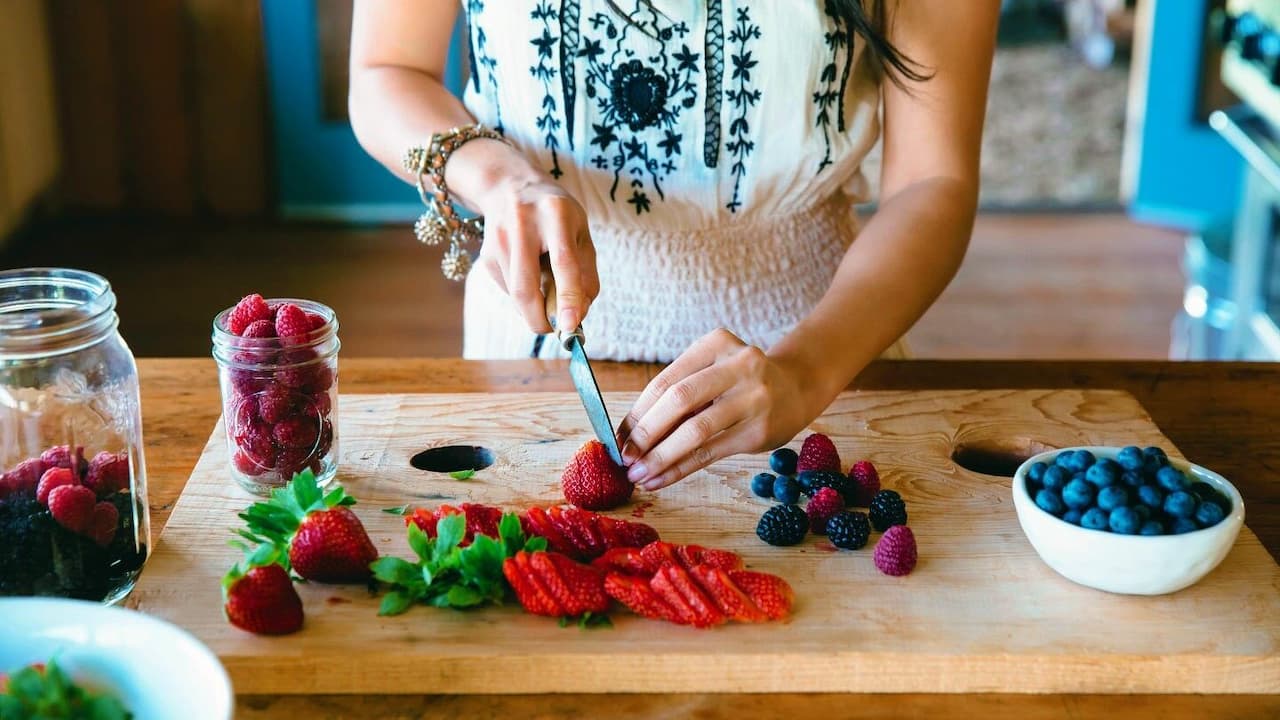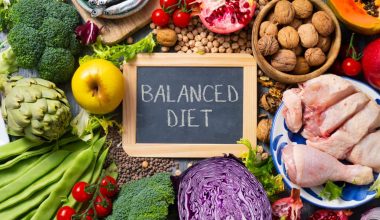When it comes to managing blood sugar, fruits can be a powerful ally. Packed with fiber, antioxidants, and essential nutrients, the right fruits can support stable glucose levels and curb sugar spikes. However, what many people overlook is that these very fruits can also be contaminated with microplastics and pesticide residues. These contaminants can harm your health and, in some cases, counteract the very benefits you’re seeking.
Here are the top 10 fruits for stabilizing blood sugar, along with a critical look at the contamination risks they carry:
1. Berries (Blueberries, Strawberries, Raspberries, Blackberries)
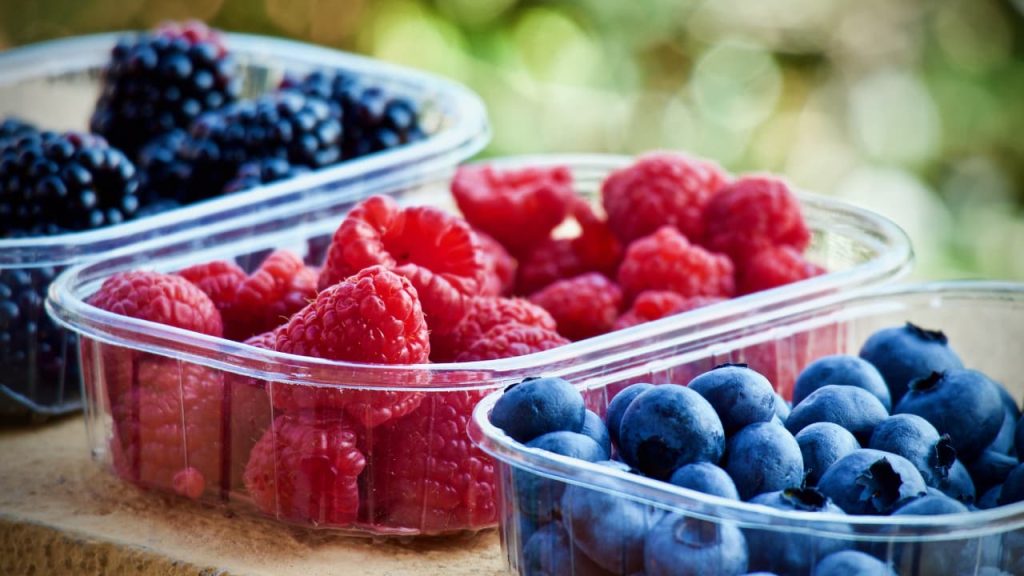
- Blood Sugar Benefits: Berries are low in sugar and high in fiber and antioxidants, and rich in polyphenols. They help improve glucose metabolism and insulin sensitivity, and reduce blood sugar spikes.
- Contamination Risks: Berries also have soft skins that make them highly absorbent, increasing their susceptibility to both pesticide residues and microplastic contamination from air and water.
Berries are nutrient powerhouses, but they are also among the most pesticide-contaminated fruits. Due to their delicate, porous skin and tendency to grow close to the ground, they absorb and retain pesticide residues more than many other fruits. Here’s a breakdown of their contamination risk:
Pesticide Contamination in Different Berries
- Strawberries – Consistently rank at the top of the Environmental Working Group’s (EWG) “Dirty Dozen” list due to high pesticide residue levels.
- Blueberries – Generally less contaminated than strawberries but still show moderate pesticide levels, especially imported varieties.
- Raspberries – Often contain multiple pesticide residues, making thorough washing essential.
- Blackberries – Have a high risk of contamination due to their thin skin and clustered growth, which can trap pesticides.
2. Apples
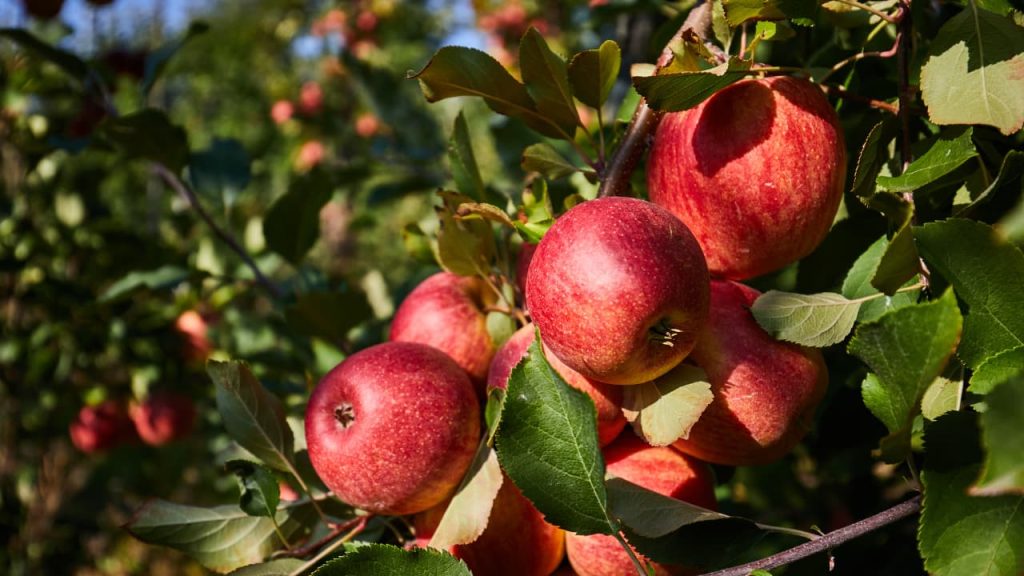
- Blood Sugar Benefits: Apples are high in soluble fiber (especially pectin), which slows sugar absorption and supports digestive health.
- Contamination Risks: Apples are among the most pesticide-contaminated fruits. Their thin skins can absorb both synthetic chemicals and microplastics, especially those grown in polluted soil or treated with wax coatings that trap contaminants.
Why Are Apples Contaminated?
Apples are one of the most pesticide-contaminated fruits, frequently appearing on the Environmental Working Group’s (EWG) “Dirty Dozen” list. Additionally, research has found microplastics in apples, raising further health concerns. Here’s why:
- Thin, Wax-Coated Skin Retains Pesticides
- Apples have a naturally thin skin, making them more susceptible to absorbing pesticides.
- Many conventional apples are coated with food-grade wax, trapping pesticide residues beneath the surface.
- Microplastic Contamination from Water & Soil
- Apples absorb microplastics from contaminated irrigation water, soil, and air pollution.
- Studies show that microplastics can enter plants through root systems and accumulate in fruits.
- Frequent Pesticide Spraying
- Apples are prone to pests and fungal infections, leading farmers to use multiple layers of pesticide sprays.
- Even after washing, some residues remain trapped in the wax coating or seep into the skin.
The Least Contaminated Apples
- Local & Seasonal Apples – Often contain fewer pesticides than imported apples due to different regulations and shorter storage times.
- Organic Apples – The safest option, as they are grown without synthetic pesticides or wax coatings.
- Thicker-Skinned Varieties (like Fuji or Honeycrisp) – Less likely to absorb pesticides deeply compared to thinner-skinned varieties like Gala or Golden Delicious.
3. Pears
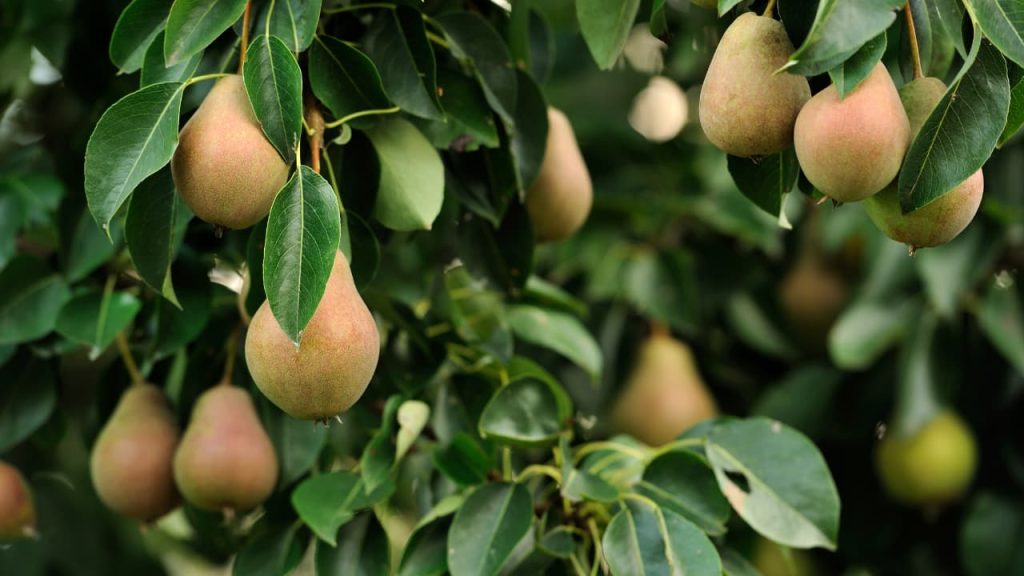
- Blood Sugar Benefits: Pears have a low glycemic index and are high in fiber, making them effective at moderating blood sugar.
- Contamination Risks: Pears often rank high on pesticide contamination lists and may also carry microplastics from polluted irrigation systems. Their soft, porous skin makes proper cleaning essential.
How Pears Can Be Contaminated
Like apples, pears can absorb microplastics from contaminated soil, irrigation water, and air pollution. Research indicates that fruits grown in polluted environments can contain microplastics, especially those that grow on trees and absorb water through their roots.
- How microplastics get into pears:
- Irrigation water: If water sources are polluted with microplastics, they can be absorbed through the pear tree’s roots.
- Soil contamination: Microplastics from fertilizers, pesticides, and environmental pollution can transfer into the fruit.
- Airborne particles: Microplastic dust from urban pollution can settle on pear skins.
Pears regularly appear on the Environmental Working Group’s (EWG) Dirty Dozen list, meaning they often contain high levels of pesticide residues.
Many conventionally grown pears are coated with food-grade wax, which can trap pesticides underneath.
Why pears are heavily sprayed with pesticides:
They are susceptible to pests like codling moths and fungal infections, leading to frequent pesticide treatments.
Their thin, porous skin allows pesticides to be absorbed more easily than thick-skinned fruits.
4. Oranges and Citrus Fruits
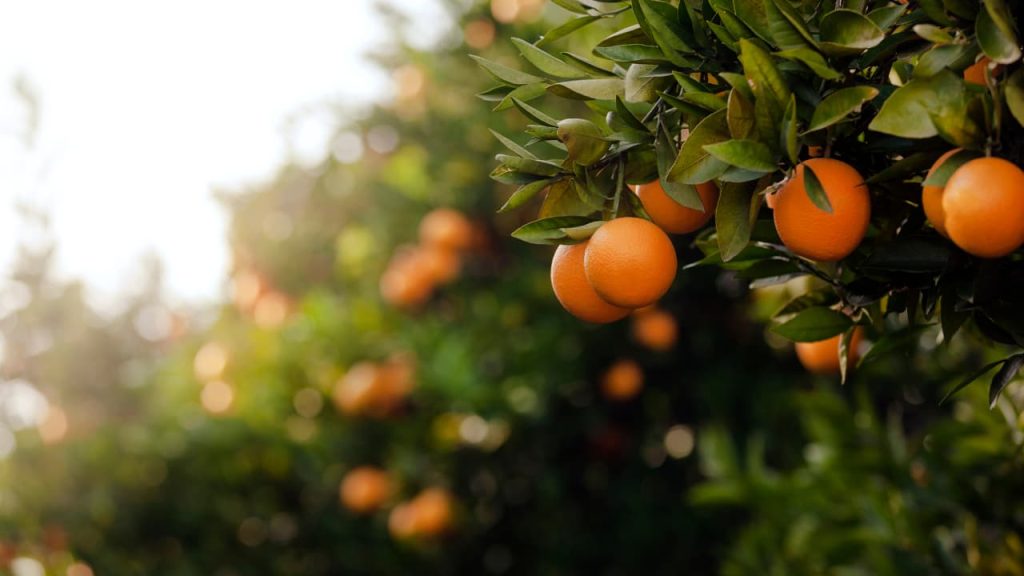
- Blood Sugar Benefits: Citrus fruits are rich in fiber and vitamin C, and they have a low glycemic load. They also contain hesperidin, a flavonoid that may help regulate blood sugar.
- Contamination Risks: While their thicker peels offer some protection, citrus fruits can still carry pesticide residues, particularly on the surface. Additionally, imported citrus may be treated with fungicides or wax that trap chemical residues.
🍊 How Oranges Can Be Contaminated
Oranges, like many citrus fruits, are grown in large-scale orchards where synthetic pesticides and herbicides are often used to control pests and diseases. These chemicals can linger on the peel and pose potential health risks if not properly cleaned.
While the thick peel offers some protection from internal contamination, residues on the skin can still transfer to your hands, knives, and surfaces — and eventually to the edible flesh when peeling or slicing.
Moreover, microplastic contamination has become an emerging concern. These tiny plastic particles can enter the fruit indirectly through contaminated water, soil, or packaging. Though the levels are generally lower compared to soft fruits, they still pose a potential long-term health risk if consumed frequently without proper cleaning.
5. Avocados
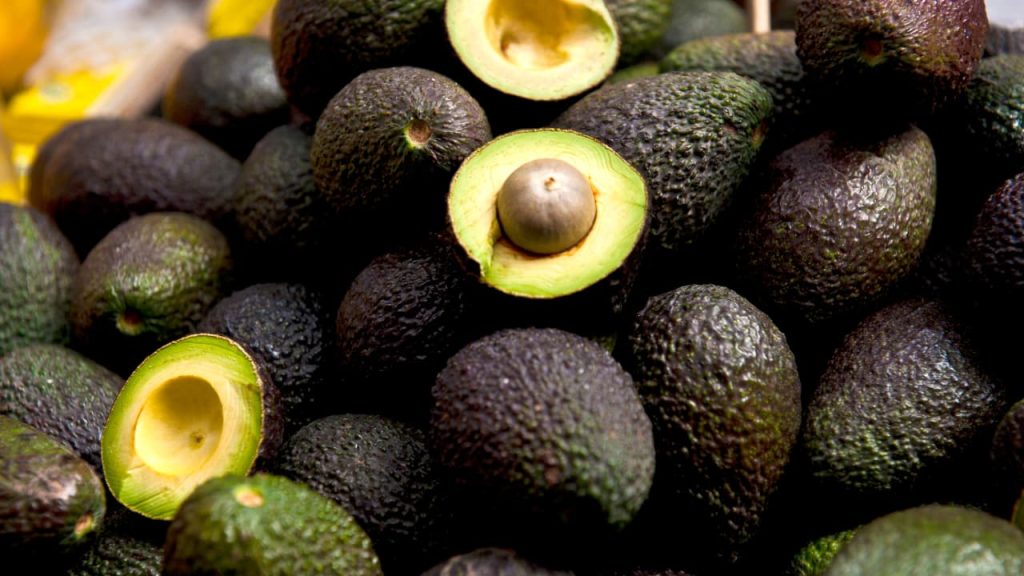
- Blood Sugar Benefits: Though not sweet, avocados are fruits that are extremely low in carbs and rich in healthy fats and fiber—a perfect combination for blood sugar control.
- Contamination Risks: Avocados are generally lower in pesticide residues but can still accumulate microplastics from polluted soil and water sources. While they have thick skins, improper handling and environmental exposure can still introduce contaminants.
🚨 How Avocados Can Be Contaminated
Avocados are often considered one of the “cleaner” fruits when it comes to pesticide contamination, primarily due to their thick, protective skin. In fact, they frequently rank among the least contaminated fruits in the Environmental Working Group’s (EWG) annual report — often making the Clean Fifteen list.
However, that doesn’t mean they’re immune to:
1. Pesticide Residue on the Skin
Even though you don’t eat the peel, pesticides used during cultivation can linger on the outer surface. These residues can transfer to your hands, knives, or cutting boards — and ultimately to the edible flesh during preparation.
2. Microplastic Contamination
Microplastics can enter avocados indirectly through:
- Contaminated water used in irrigation.
- Plastic packaging or storage.
- Soil pollution from environmental waste.
Though the risk of internal contamination is relatively low due to the dense outer skin and inner seed, it’s still wise to minimize exposure, especially with consistent consumption.
6. Cherries
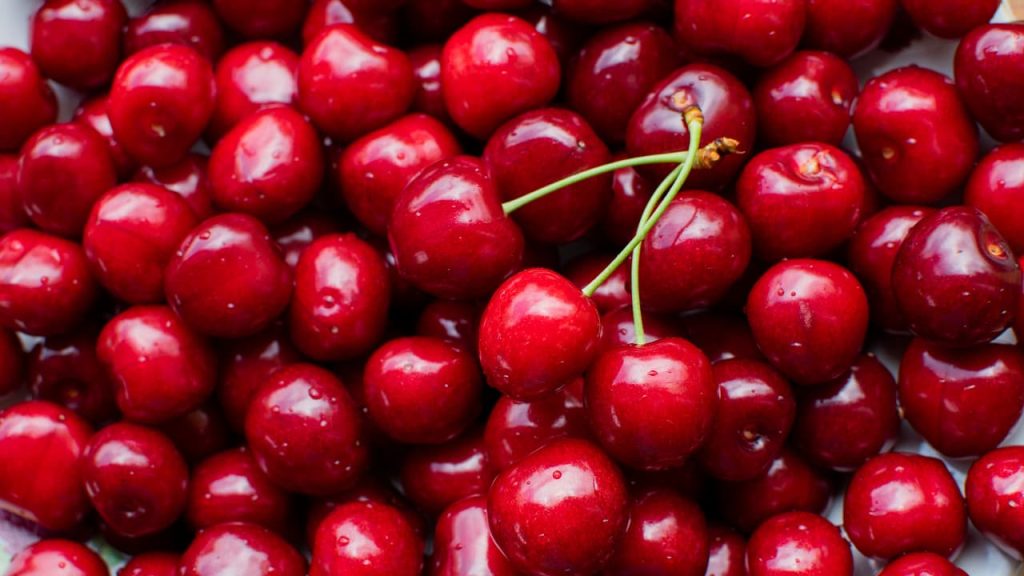
- Blood Sugar Benefits: Cherries have a low glycemic index and contain anthocyanins that may enhance insulin production.
- Contamination Risks: Cherries are highly sprayed with pesticides, and their thin skins allow easy absorption of chemicals and environmental microplastics.
🚨 How Cherries Can Be Contaminated
Cherries, like many fruits, are susceptible to both pesticide contamination and microplastics, although the risk and levels of contamination can vary. Here’s how:
1. Pesticide Residue
Cherries are often grown with the use of pesticides to protect them from pests and fungal diseases. Since cherries have a relatively thin skin and grow close to the surface of the plant, pesticides can easily accumulate on their skin. Even though we don’t eat the skin directly, pesticides can be transferred to the flesh when the fruit is cut, handled, or eaten.
2. Microplastic Contamination
While microplastics are more commonly associated with packaged and processed foods, cherries can also be affected by microplastic contamination through:
- Irrigation with contaminated water: Cherries, like other crops, may be irrigated with water that contains microplastics from runoff or water pollution.
- Plastic packaging: Cherries are often sold in plastic containers or bags, which could expose the fruit to microplastic particles during storage and transport.
Though cherries’ small size and delicate skin make them less prone to absorbing microplastics directly from the environment, contamination is still a concern, particularly from the handling and storage stages.
7. Kiwi
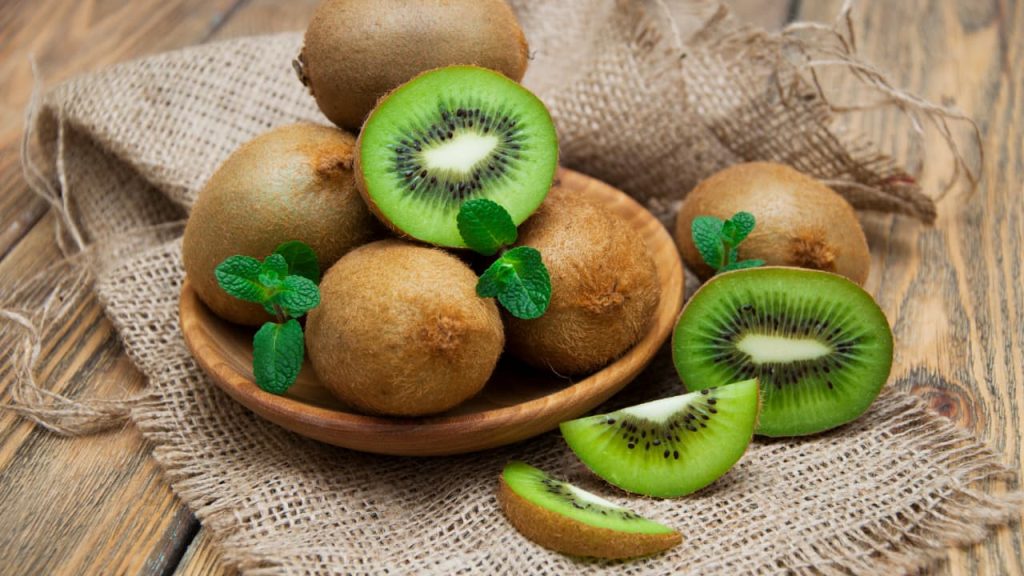
- Blood Sugar Benefits: Kiwi is rich in vitamin C, fiber, and potassium, and it has a moderate glycemic index that supports blood sugar regulation.
- Contamination Risks: Kiwi has a fuzzy skin that can trap pesticide residues. While less likely to absorb microplastics than softer-skinned fruits, it is still vulnerable if grown in polluted environments.
🚨 How Kiwis Can Be Contaminated
Kiwis, like many other fruits, can be exposed to both pesticides and microplastics. While the fuzzy skin of a kiwi might offer some protection, contamination can still occur, especially during cultivation, handling, and packaging.
1. Pesticide Residue
Kiwis are often treated with pesticides to protect them from pests and diseases during the growing process. While the skin of the kiwi may help protect the flesh from pesticide residues, when you peel or cut the fruit, you may still come into contact with any pesticides that are present on the surface.
2. Microplastic Contamination
Kiwis can be exposed to microplastics through various means:
- Irrigation: If the water used to irrigate kiwi crops is contaminated with microplastics (from runoff or polluted water), the fruit may absorb some of these particles.
- Packaging: Like many fruits, kiwis are often packaged in plastic containers or bags, which could introduce microplastic particles onto the skin during transport or storage.
While the risk of microplastics on the inside of the kiwi fruit is minimal, the skin is where contamination is most likely to occur.
8. Grapefruit
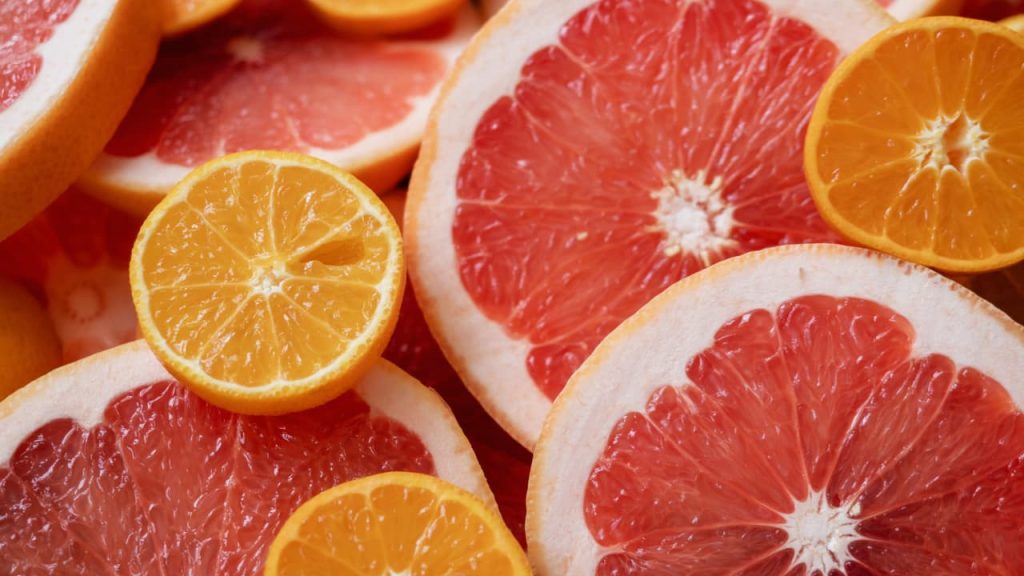
- Blood Sugar Benefits: Grapefruit is low in sugar and has compounds that may improve insulin sensitivity.
- Contamination Risks: Like other citrus fruits, grapefruit is sometimes treated with post-harvest chemicals. Imported varieties may be coated with fungicides or waxes that trap harmful residues.
🚨 How Grapefruit Can Be Contaminated
Grapefruits, like many other fruits, can be exposed to both pesticides and microplastics during their growth, handling, and packaging processes. While the thick rind offers some protection, contamination is still possible, and it’s crucial to clean the fruit thoroughly before consumption to avoid health risks.
1. Pesticide Residue
Pesticides are commonly used in the cultivation of grapefruits to protect them from pests, diseases, and mold. While the outer skin of a grapefruit acts as a barrier, pesticides can still remain on the surface, which can be transferred to the fruit when the skin is peeled or cut. Studies have found that citrus fruits, including grapefruits, may have higher pesticide residues compared to other fruits due to their exposure during the growing and post-harvest processes.
2. Microplastic Contamination
Grapefruits can be contaminated with microplastics in several ways:
- Irrigation water: Grapefruit trees may be irrigated with water contaminated by microplastics from polluted sources or runoff.
- Packaging: Grapefruits are often sold in plastic packaging or plastic-wrapped clusters, which could introduce microplastic particles to the fruit’s surface during transport or handling.
Although the microplastics are mostly present on the outer skin of the grapefruit, their presence can still affect your health when consumed.
9. Plums

- Blood Sugar Benefits: Plums are rich in antioxidants and fiber, with a moderate glycemic index that helps stabilize blood sugar levels.
- Contamination Risks: Plums are frequently treated with pesticides and may also carry residues in their skins. Depending on where they are grown, they may absorb microplastics through contaminated soil or water.
🚨 How Plums Can Be Contaminated
Plums, like many other fruits, can be contaminated by pesticides and microplastics during their cultivation, transportation, and storage. While these contaminants are more commonly associated with fruits that have thin skins, plums are still susceptible to contamination, especially when grown conventionally.
1. Pesticide Residue
Pesticides are widely used in conventional farming to protect plums from pests, diseases, and mold during their growth. Even though plums have a thin skin, pesticide residues can still be present on the fruit’s surface. When plums are harvested, stored, and transported, they may also come into contact with residual chemicals, which can be transferred to the fruit if not properly cleaned.
2. Microplastic Contamination
Plums can become contaminated with microplastics through various channels:
- Irrigation water: If plums are irrigated with water containing microplastic particles, they can end up on the surface of the fruit.
- Packaging: During storage and transportation, plums are often packed in plastic containers or plastic wraps, which can introduce microplastic particles onto the fruit’s surface.
- Environmental factors: Microplastics are pervasive in the environment, and plums grown in polluted areas might absorb microplastics through their skin.
These microplastics may not always be visible, but they can potentially be ingested if not properly cleaned.
10. Grapes
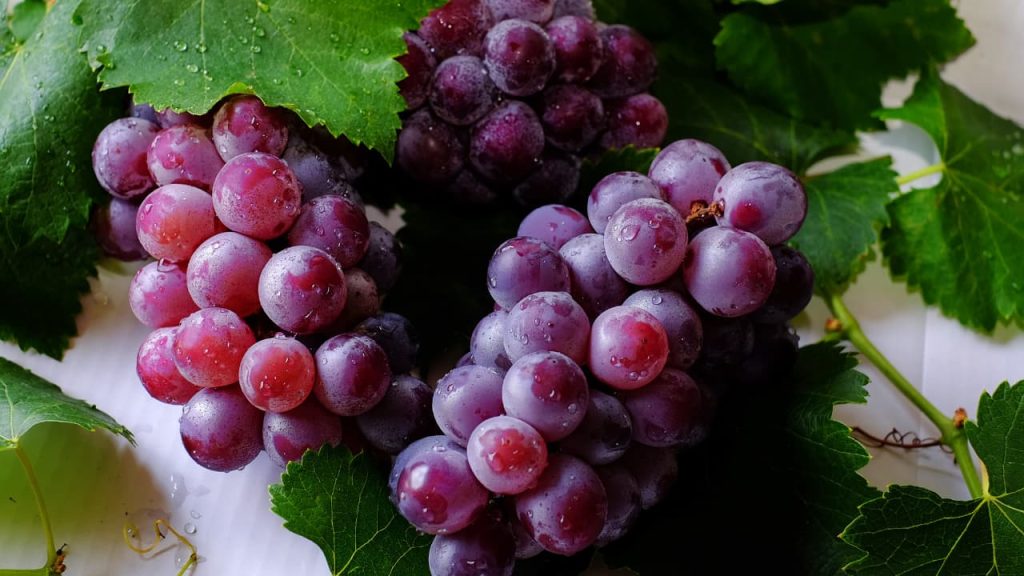
- Blood Sugar Benefits: Grapes, particularly in moderate portions, provide resveratrol and flavonoids that may support insulin sensitivity.
- Contamination Risks: Grapes rank high on the Dirty Dozen list and are heavily sprayed with pesticides. Their thin skins make them extremely vulnerable to pesticide penetration and microplastic accumulation.
🚨 How Grapes Can Be Contaminated
Grapes, like many other fruits, are prone to contamination by pesticides and microplastics, which can diminish their health benefits. Here’s a closer look at how each of these contaminants affects grapes:
1. Pesticide Residue
Pesticides are commonly used in conventional grape farming to protect the crops from pests, molds, and diseases. Grapes are often sprayed with chemicals multiple times during their growth cycle. Even though the outer skin of grapes may appear clean, they can still harbor pesticide residues on the surface or just beneath the skin. These residues can pose health risks when ingested over time, especially since the skin of grapes is consumed directly.
2. Microplastic Contamination
Grapes are susceptible to microplastics through various channels:
Environmental factors: Microplastics are pervasive in the environment and can settle on grape vines or fruit during the growing process. Once on the grapes, these tiny plastic particles are difficult to remove without proper cleaning.
Irrigation water: Microplastics can be present in irrigation water if it is sourced from polluted areas. The fruit can absorb small plastic particles directly through its skin.
Packaging: Grapes are often sold in plastic containers or wrapped in plastic, which can introduce microplastic contamination during storage, transportation, and handling.
Why Proper Cleaning Is Not Optional
While these fruits are highly beneficial for managing blood sugar, eating them without thoroughly cleaning them can expose you to a host of harmful contaminants. Pesticide residues are linked to endocrine disruption, metabolic issues, and increased risk of chronic diseases. Microplastics may cause inflammation, oxidative stress, and even insulin resistance.
To truly benefit from these fruits, it’s not enough to simply eat them. You must ensure they are cleaned properly to remove contaminants that can silently sabotage your health goals.
Be sure to check out our complete guide to cleaning fruits effectively, so you can enjoy their blood sugar-stabilizing benefits without the hidden health risks.

